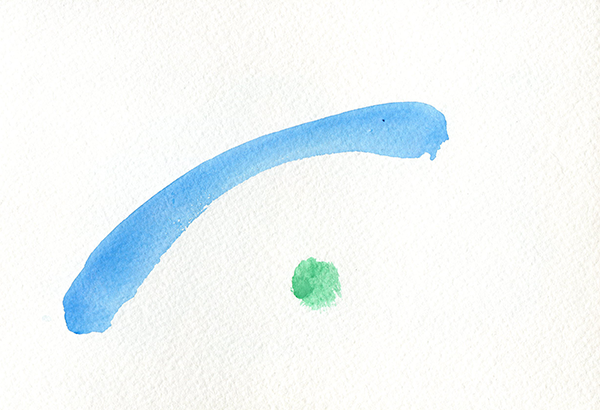The fifth Buddhist paramita, or transcendent action, is known in Sanskrit as dhyana, or sometimes as samadhi, and in Tibetan as samten,. It is often translated as meditation. This doesn’t mean every day meditative sitting, so it also is translated as “meditative absorption” or “concentration.”
Buddhist teacher Susan Piver divides it into three stages: 1) “dwelling in the Dharma of seeing,” 2) accumulating goodness, and 3) enthusiasm for helping others.
In the first stage, we stay with our experiences, rather than getting caught up in our thoughts about the experiences. We allow our minds and hearts to rest simply, alertly, and openly, not focusing narrowly or strenuously, without being distracted by our judgments, opinions, or life’s challenges. “Concentration,” writes Tsoknyi Rinpoche , “is not an effort of focusing on something but an abiding in a spacious centerless center.” We train for this as we practice meditation, bringing our attention back to the breath, rather than getting lost in thought. In this way, we begin to see clearly.
In the second stage, we accumulate goodness by continually placing our attention outside of ourselves. Rather than being distracted by our own inner stories about what’s going on and the person in front of us, we experience what and who is there. Practicing by paying attention to our thoughts and feelings without getting caught up in them, we “work with them, breathe with them, and welcome them.” Tsoknyi calls this “welcoming attentiveness.”
As we are with what is happening, seeing truly, our natural goodness – our wish to be of benefit –arises. As we see and hear those around us more completely, Tsoknyi says we “naturally and spontaneously feel our hearts opening.” When we are paying attention, we can be more effective with what we have to offer.
In the final stage, we increase our enthusiasm for helping others. “Childlike wonder begins to open up,” Tsoknyi assures us. “Love begins to awaken.”
How does meditation become transcendent action? “Attention,” writer and Zen teacher John Tarrant suggests, “is the most basic form of love. Through it, we bless and are blessed.” Meditating, we notice our bodies, thoughts, and feelings without insisting that they be other than they are. The more we practice, the more we can extend “welcoming awareness” to all parts of our lives, including people. We swim in a sea of blessings and are blessings ourselves.
In your journal:
- how do you greet your thoughts and emotions?
- Write about being around people (or one person.)
- What is the centerless center?
- To what do you pay attention? [List?]
- Draw meditative absorption..

